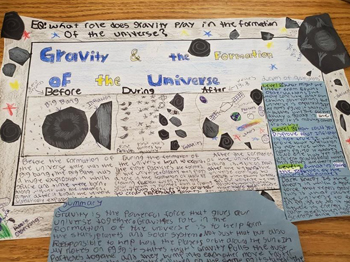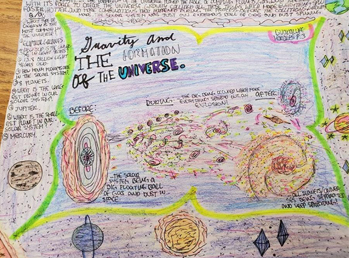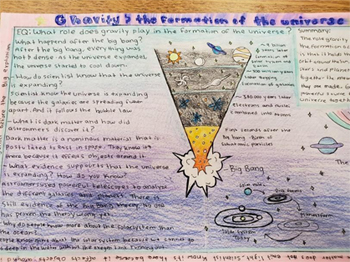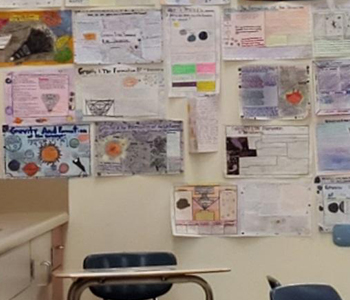Using One-Page Assignments as Alternative Assessments
By Vickie Harri, EdD
Not too long ago the Advancement Via Individual Determination (AVID) Coordinator at my middle school sent an email requesting teachers to share their one-pagers (also known as one-sheets) with her for our AVID revalidation. My response was simply “one-what?” I had never heard of such a thing. Then, someone on the CSTA middle school science teacher Facebook group posted a type of alternative assessment where students interact with their learning by drawing, labeling, and writing by utilizing notebooks and other instructional resources. This, I was informed, was a one-pager. One-pagers were developed by AVID and are a “creative response to your learning experience. It allows you to respond imaginatively while being brief and concise in making connections between words and images. We think about what we see and read differently when we are asked to do something with what we have seen or read. We learn best when we create our own ideas. Your personal thinking about what you have experienced should be understood by the audience that views the One-Pager.”


The objective of one-pagers is for students to be able to “express comprehension of, reactions to, and connections with a specific topic or piece of text.” Betsy Potash states that one-pagers provide a variety of and a way for students to share what they’ve learned beyond the typical question/answer options. Learning becomes more memorable as students mix images with information. One-pagers also allow students’ creativity to come out in powerful displays of learning.
So, what are the components of a one-page assignment? One-pagers use white unlined paper and are colorful, with the entire page filled with text and diagrams. According to the AVID Teacher’s Guide, one-pagers should have excerpts from the reading or text, graphic representations of their learning, and a personal response.
When I assigned my first one-pager on the formation of the universe I had my students include a title, an essential question, and a colored border demonstrating the concept we were studying. We also included three drawings of the universe, before, during and after the big bang and, of course, a written description of each drawing. I had them write and answer five questions using Costa’s Levels of questions as well. Finally, they wrote a summary answering the essential question. Some advocates of one-pagers provide their students with templates to use in the execution of the assignment. I chose not to provide a template because I felt it limited student creativity. As I teach 8th grade, the assignment took longer than I expected (three days instead of two), but the creativity and learning was worth the extra time.


For assessment, I created a simple rubric listing the requirements of the assignment; title, essential question, border, drawings with written description, five questions and answers, summary, full color, and creativity. The grading categories were Met, Somewhat Met and Did Not Meet.
My students enjoyed doing the one-pagers, creating some spectacular projects, and as a teacher, they gave me a good indication of their learning and understanding of the concept. And as an added bonus, they look really good on the classroom wall. All the pictures are samples of student work.
Resources:
Cult of Pedagogy - A Simple Trick for Success with One-pagers
AVID Middle Level Writing with Integrated Reading and Oral Language Teacher Guide
Vickie Harri, EdD. is an 8th grade science teacher at Oaks Middle School in the Ontario-Montclair School District and a CSTA member.




